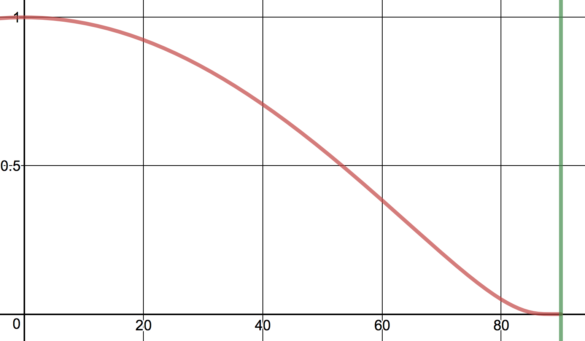romanoweed
Well-known member
Based on this graph, you would need to go 53.3º up or down from the equator for light to be half as intense.

didnt just trust this single calculation.. another said roundabout the same:
The smaller the angle, the greater the surface area over which the sun’s rays spread. This effect reduces the sun’s intensity in any one place. For example, at a 45 degree angle of incidence, solar radiation covers a 40 percent greater area and is 30 percent less intense than at the maximum angle of incidence of 90 degrees.
Both calculations match kind of... one of bouth was calculated aroud 45 degre:
And 45 degree angle equals 45 degree latitude i think.
result: 45 degree latitude equals 30 procent less sun intensity
didnt just trust this single calculation.. another said roundabout the same:
The smaller the angle, the greater the surface area over which the sun’s rays spread. This effect reduces the sun’s intensity in any one place. For example, at a 45 degree angle of incidence, solar radiation covers a 40 percent greater area and is 30 percent less intense than at the maximum angle of incidence of 90 degrees.
Both calculations match kind of... one of bouth was calculated aroud 45 degre:
And 45 degree angle equals 45 degree latitude i think.
result: 45 degree latitude equals 30 procent less sun intensity



